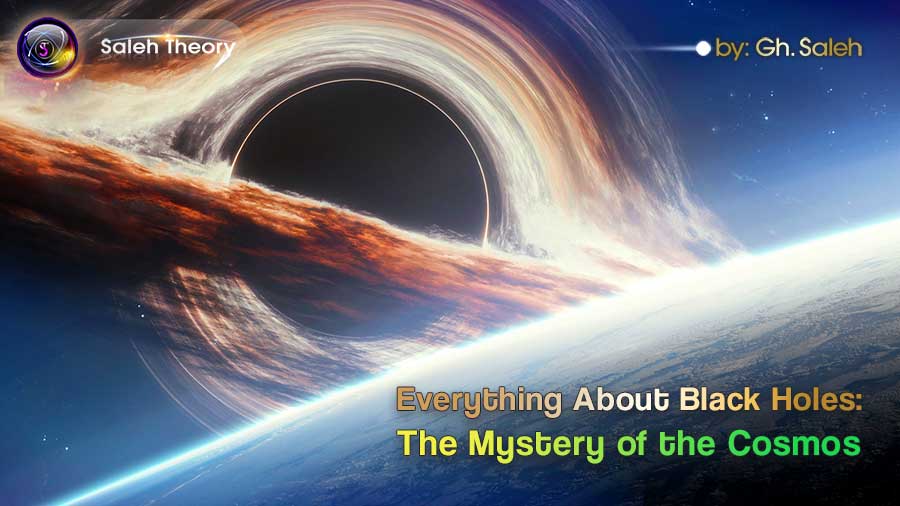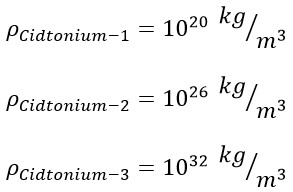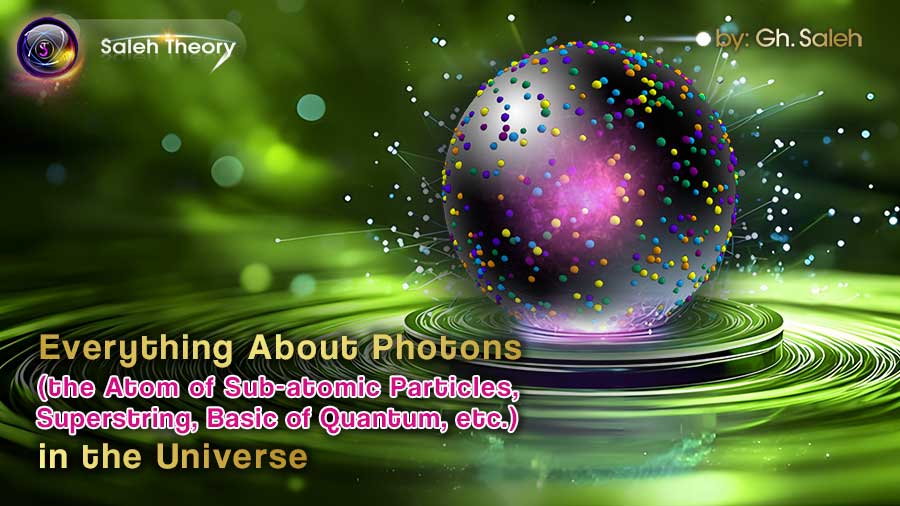
Everything About Black Holes: The Mystery of the Cosmos
If we consider the atomic model of elements, which consists of a central nucleus surrounded by orbiting electrons, we observe that each element has a unique model and density. This difference arises from the increasing number of protons (along with neutrons) in the nucleus as the atomic number increases, and a corresponding increase in the number of orbiting electrons. These changes in subatomic particles alter the density of the matter, giving each element its own specific density. Therefore, density can be a comparative indicator for materials.
To propose a model and nature for black holes, we must consider their density, which is approximately between 1020 and 1032 kg⁄m3. To investigate which particle could create such a density, the densities of the following particles were examined:

Given that the density of these particles is significantly lower than the range of black hole densities, these particles alone cannot provide the necessary density to form a black hole. For a better understanding, we can consider white dwarfs and their primary constituent particle, the proton.
White dwarfs, which form after a stellar explosion, have a density of around 109 kg⁄m 3, which is less than the density of a proton. Consequently, we can consider them to be composed of protons.
However, it is clear that photons, electrons, and protons cannot create the densities found in black holes. Therefore, we must define a particle smaller than a photon that could generate such densities. According to the Saleh Theory, a photon also has a structure, similar to an atom, and can be broken down into smaller particles with a higher density. One of the subatomic particles proposed by this group is "Cidtonium 1", which has a density up to 106 times that of a photon, approximately, approximately 1020 kg⁄m3.
Given that the density of black holes falls within the range of 1020 to 1032 kg⁄m3, only a portion of black holes can be composed of Cidtonium 1. To create denser black holes, other smaller particles are required. The next particle is called "Cidtonium 2", with a density 106 times that of Cidtonium 1, which is equivalent to 1026 kg⁄m3. "Cidtonium 3" is then defined with a density 106 times that of Cidtonium 2, approximately 1032 kg⁄m3. Thus, the three Cidtonium models can explain the densities of different types of black holes.

Processes of Black Hole Formation
1. The Primordial Big Bang which has formed the cores of many galaxies.
A look at the densities of cosmic objects reveals the following:
Elements and Atoms: 0 and 106 kg⁄m3
White Dwarfs, Magnetars, some Black Holes: 1014 to 1020 kg⁄m3
Big Bang: around 1041 kg⁄m3
These figures suggest that objects with densities between 1020 and 1035 kg⁄m3 exist but are currently unknown. Some of these objects are the primordial cores of black holes that separated from the Big Bang.
Furthermore, given that the age of our universe is approximately 14 billion years and some galaxies are around 12 to 13 billion years old, it can be concluded that their core black holes were formed at the beginning of the Big Bang.
In fact, primordial black holes are a part of the original Big Bang and have the potential to create black holes with densities of 1020 kg⁄m3 and more.
During the breakdown of the Big Bang, all models of different objects, including black holes and nebulae, were created. In the breakdown of the Big Bang, or a subset of it, objects with a density of around 1026 kg⁄m3 become the cores of black holes with an average density of 1020 kg⁄m3.
Objects with a density of 1032 kg⁄m3 create the cores of black holes that we call super black holes with an average density of 1026 kg⁄m3.
Objects with a density of 1040 kg⁄m3 create the cores of black holes that we call meta black holes, with an average density of 1032 kg/m3. Therefore, it can be stated that there are three types of black holes based on their density:
Standard Black Hole: With a core in the density range of 1026 kg⁄m3 (e.g., the Milky Way galaxy's black hole).
Super Black Hole: With a core in the density range of 1032 kg⁄m3 (e.g., the Andromeda galaxy's black hole).
Meta Black Hole: With a core in the density range of 1040 kg⁄m3 (e.g., the Pleiades cluster's central black hole).
2. The Death of Massive Stars
A stellar explosion creates an impulse, and the released energy expels the electrons from the star's atoms. As a result, a collection of protons and neutrons accumulates at the centre, forming a dense mass known as a black hole. Essentially, the core structure of black holes is composed of a collection of protons and neutrons, while their outer structure can be a sea of electrons.
White Holes, or the Other Side of a Black Hole
Simply put, black holes can be thought of as cosmic suction objects that absorb everything around them, including stars, particles, and so on. Since "for every action in nature, there is an equal and opposite reaction," the process of absorption on one side creates the possibility of expulsion on the other. Heavier particles like protons and neutrons remain at the centre of the black hole, while other particles, such as electrons and photons, are expelled from the other side. This phenomenon of particles escaping from a black hole is known as a white hole. In fact, the balance between the absorption and expulsion reactions creates stability and order within the black hole, ensuring its longevity and structural integrity. Since this is a natural feature of a black hole, a certain percentage of what it absorbs is emitted. Around 40% of the output consists of photons, 30% consists of electrons, and a small proportion includes protons and neutrons.
References:
[1] Saleh, Gh. "New Discoveries About the Nature of Black Holes and Their Structural Model 2025." Saleh Theory, 08 Jun. 2025, https://saleh-theory.com/article/new-discoveries-about-the-nature-of-black-holes-and-their-structural-model-2025
[3] Saleh, Gh. "A New Explanation for Black Holes and White Holes." Saleh Theory, 24 Apr. 2023, https://www.saleh-theory.com/article/a-new-explanation-for-black-holes-and-white-holes
[7] Saleh, Gh. "The outward/inward nature of black holes and their structure (beyond the standard model)." 14th Conference on the Intersections of Particle and Nuclear Physics (CIPANP 2022. 2022.
 Download PDF
Download PDF 

